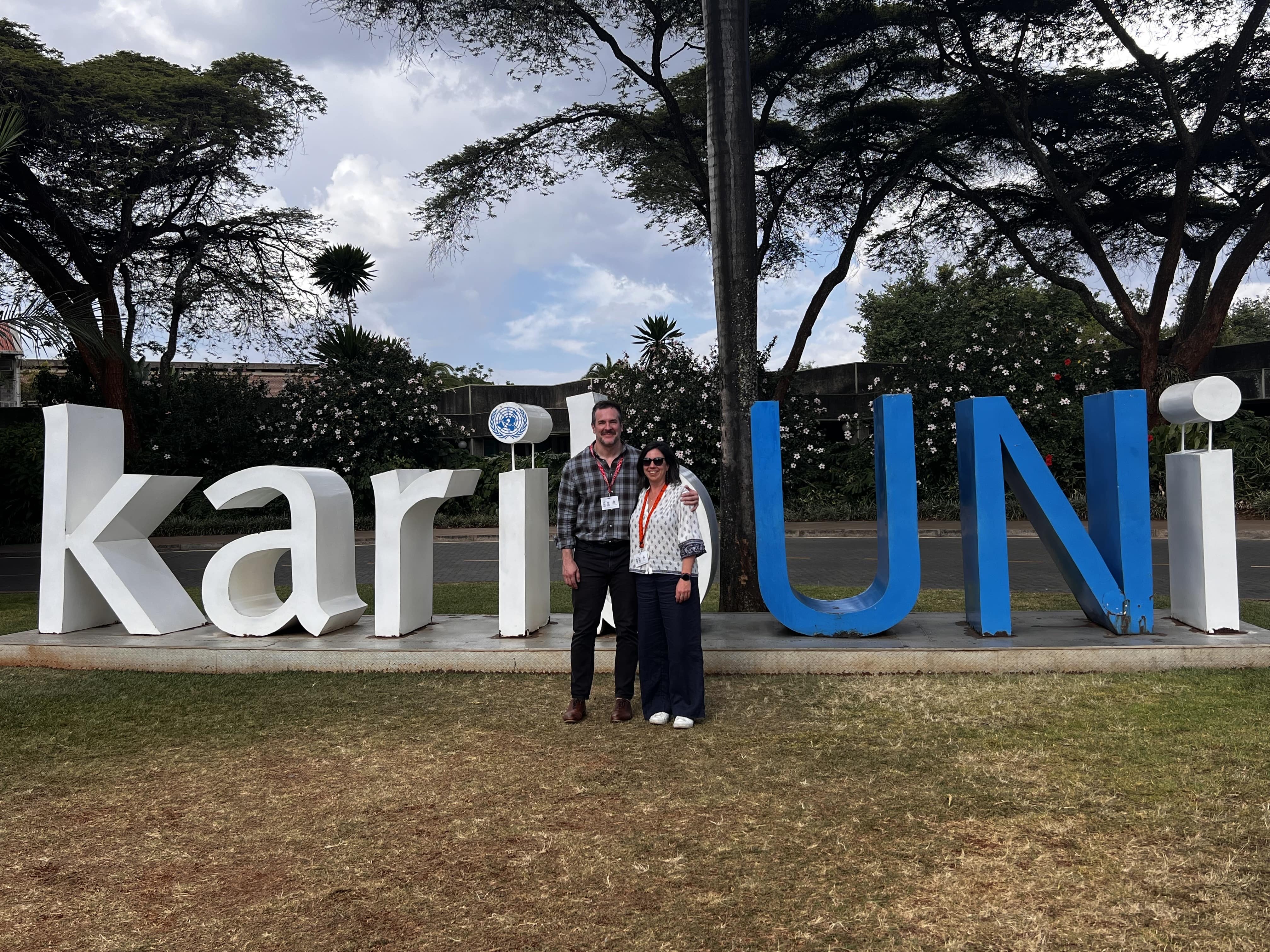The Compass for SRM: Collective Need Over Private Profit

Solar radiation modification (SRM) is still mostly an idea. Yet even early-stage ideas can gain momentum, and the direction of any momentum sets the stage for what might follow. Small research programs, attempted experiments, and growing policy attention are beginning to solidify the SRM field and set the direction for the field’s further development. Decisions and investments made now will matter for what SRM becomes.
Something coming into sharper focus as early decisions are taken and investments made is that there are two competing visions for what SRM ought to be.
One vision has SRM develop as a public good governed by collective need and will. In this vision, SRM is subject to some kind of public control, such that if it were ever to be developed and deployed, broad social good and the particular needs of those with most to gain and lose would be paramount considerations.
A second, competing vision has SRM developed as a private asset optimized for return on investment. This vision rests on the premise that the private sector is best positioned to advance new technologies, and that new technologies will be key to tackling climate change. Already, we see a few ventures filing patents and treating the stratosphere as an investment frontier.
How to make sense of these visions? Our view is that consideration of SRM should and must rest on a public goods foundation. At the same time, this does not mean conferring zero role for the private sector. Even as we work to prioritize and privilege the public role in controlling whatever SRM might become, there’s a fruitful conversation to be had about what a proper, circumscribed role might be for private sector involvement in SRM investigation.
A Formative Moment
We are in a formative moment for SRM—not because deployment is imminent (it isn’t), but because many assumptions and technical norms set now will be hard to reverse once the technology becomes feasible. Early proprietary-first attempts will appear; some already have.
Their emergence should not decide whether SRM can serve the public good. Private activity should not preempt public deliberation or multilateral coordination. Actors who refuse transparency risk depriving climate-vulnerable peoples of a say in whether research proceeds or on what terms.
At the same time, dismissing SRM as ungovernable because some actors are pushing a private-sector-first vision risks ceding the space entirely to the for-profit actors. If anything, early examples of the wrong way to proceed clarify the work to be done and should spur—not stall—the building of governance.
What matters most is whether societies can make decisions about SRM that hold up under political and social pressure. Without public legitimacy, even careful experiments will fail to generate knowledge that supports accountable choices.
With that in mind, the question isn’t simply whether the private sector should pursue this work. The question is which roles the private sector can play after public purposes and goals are set. Sequencing governance upfront also reduces moral hazard risks by keeping mitigation and adaptation non-negotiable. For those engaged in SRM research or policy design, this means building governance capacity in parallel with scientific progress, not after it.
Set the Lanes Now
SRM’s effects would be transboundary and non-excludable; no one can own them. That reality makes democratic oversight and public-interest governance non-negotiable for the most sensitive decisions, while still leaving room for capital to support shared research infrastructure—under strict terms.
So, an open question becomes: what role is there for patents and other intellectual property assertions and claims around SRM? Our hunch is that the public interest is best served by an open-access orientation. Without exclusive IP or monopoly rights, there are no venture-scale rents to capture; returns, if any, come from open, auditable execution rather than owning essential knowledge.
Sensitive decisions—whether an outdoor test should proceed, which protocols govern it, and under what conditions it must stop—belong in public hands; that is, with democratically accountable institutions (national regulators) and cross-border coordination where impacts are transboundary. These decisions are best evaluated by how they reduce uncertainty, preserve reversibility, avoid lock-in, and build legitimacy.
Allowing private firms to hold intellectual property over core components of SRM could compromise scientific openness, governance capacity, ethical legitimacy, and public trust all at once. Proprietary control of aerosols, delivery systems, or data undermines transparency and replicability, turning shared climate research into a competitive race for patents. It could weaken governance by giving a few firms outsized influence over rule-making, limiting regulators’ ability to verify safety or enforce norms across borders. Ethically, it concentrates decision-making about a planetary-scale intervention in wealthy corporate hands, marginalizing climate-vulnerable populations and sidelining principles of equity and consent. And because secrecy and profit motives erode confidence in scientific integrity, it could deepen public mistrust—fueling fears that SRM is being shaped behind closed doors for private gain rather than collective benefit. Together, these dynamics risk transforming what should be a transparent, globally accountable public enterprise into a privatized experiment with planetary consequences.
By contrast, instruments, models, observing systems, and data pipelines can draw on private or philanthropic capital only if outputs remain in the commons. That requires open licensing that prevents monopolies over essential knowledge; time-bound public release of both data and methods; conflict-of-interest disclosure and meaningful limits; and procurement rules that prevent quiet capture. Establishing these principles early, before major investments are made, creates clarity for both public and private actors. Projects that do not align with these terms lose access to shared infrastructure and to public or philanthropic funding. These lanes are provisional maps, not permanent borders, but their purpose is clear: keep decision power from being boxed in by profit-first logic. There will be a role for the private sector—after public need sets direction and goals. Money can provide the engine; the compass must be collective need.
Nothing here forbids privately funded problem-solving outside these shared structures. But any solution that aims to inform public decisions or use shared infrastructure must be contributed to the commons—no exclusive IP, no tollgates. Otherwise, it may exist, but it cannot guide or gate public choices.
Profit potential cannot be the compass for public policy. When risks and effects are transboundary and shared, public interest ought to guide the rules, and investment can follow.
Turn Values into Standards
Values matter only when they are translated into systems that are visible and auditable. Translate them into operational standards the public can observe, verify, and engage with: a public registry with preregistered protocols before work begins; independent review that includes civil society and affected communities; structured engagement before, during, and after activities with explicit points where input changes decisions; time-bound open data and open methods as the default; pre-delegated stop authority that is actually tested through drills; and conflict-of-interest rules with real limits on exclusive IP controlling essential knowledge. When these standards are in place, speed becomes a virtue—because it expands decision power without closing off options. Without them, a vacuum forms and market forces—IP defensiveness and first-mover advantage—take over.
Sequence Speed to Legitimacy
“Move fast” helps only when speed expands public decision power. The principle is to go slowly as quickly as possible: accelerate the pieces that grow legitimacy and accountability; deliberately pace anything that creates lock-in until governance is strong. This is less about slowing innovation than sequencing it with legitimacy so that knowledge, not capital, leads. If SRM is headed in a bad direction—or a profit-driven actor is taking control—slowing or pausing activity may do more to preserve legitimacy than pressing ahead. The answer to premature privatization is not fatalism; it is better governance, sooner.
What Progress Looks Like
Success should be measured by public decision power, not by patents or scale, not just in the speed of research and technology development.
From our perspective, in practice, that means governments and relevant international bodies stand up a working public registry with preregistered protocols that anyone can see and use; research sponsors and regulators put credible, tested stop rules in place with clear accountability; funders, journals, and research teams make data and methods open and reusable to keep knowledge in the commons; foundations, ministries, and universities help build regional networks—especially in climate-vulnerable places—that can co-design agendas and exercise real authority; and ministries and treaty forums establish clear pathways that link community input to national and international policy. If deployment decisions are ever on the table, they will only carry legitimacy if rooted in collective judgment about public benefit, not private return.
This vision—less a prescription than a direction of travel, where governance grows alongside capability rather than lagging behind it—is one that DSG is actively working toward.
Choose the Compass Now
It is hard to maintain a clear focus on what is needed for appropriate SRM governance amid democratic backsliding and growing private influence. At the same time, anti-democratic forces raise the stakes for getting SRM governance right. Those of us committed to responsible climate governance face a narrowing window to define what legitimate SRM research looks like before market incentives do it for us. If legitimacy and collective benefit remain at the center, SRM can become a test case for strengthening durable democratic decision-making under planetary risk. The alternative is already taking shape in secret labs and venture portfolios. The window is open—and closing fast. Clarifying the lanes, embedding transparent checks, and sequencing private contribution after public governance may help align innovation with legitimacy. Only then can the momentum of capital move in the direction set by a public compass.
Join Our Community
Stay informed about the latest developments in solar geoengineering and how you can make a difference. Subscribe to our newsletter for insights, updates, and opportunities to get involved.




.jpg)
.jpg)
.jpg)
.png)

.jpg)

%20(1).jpeg)